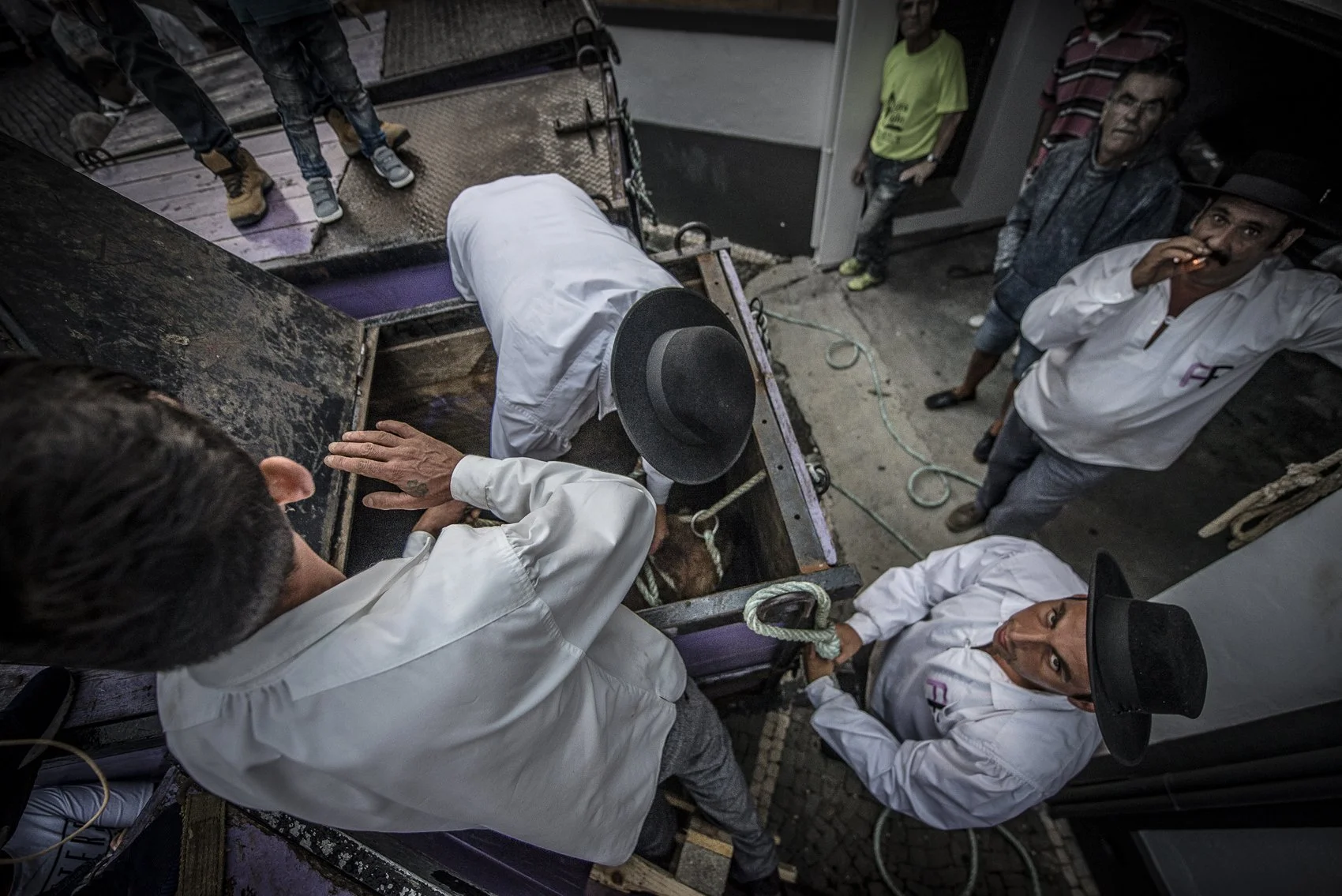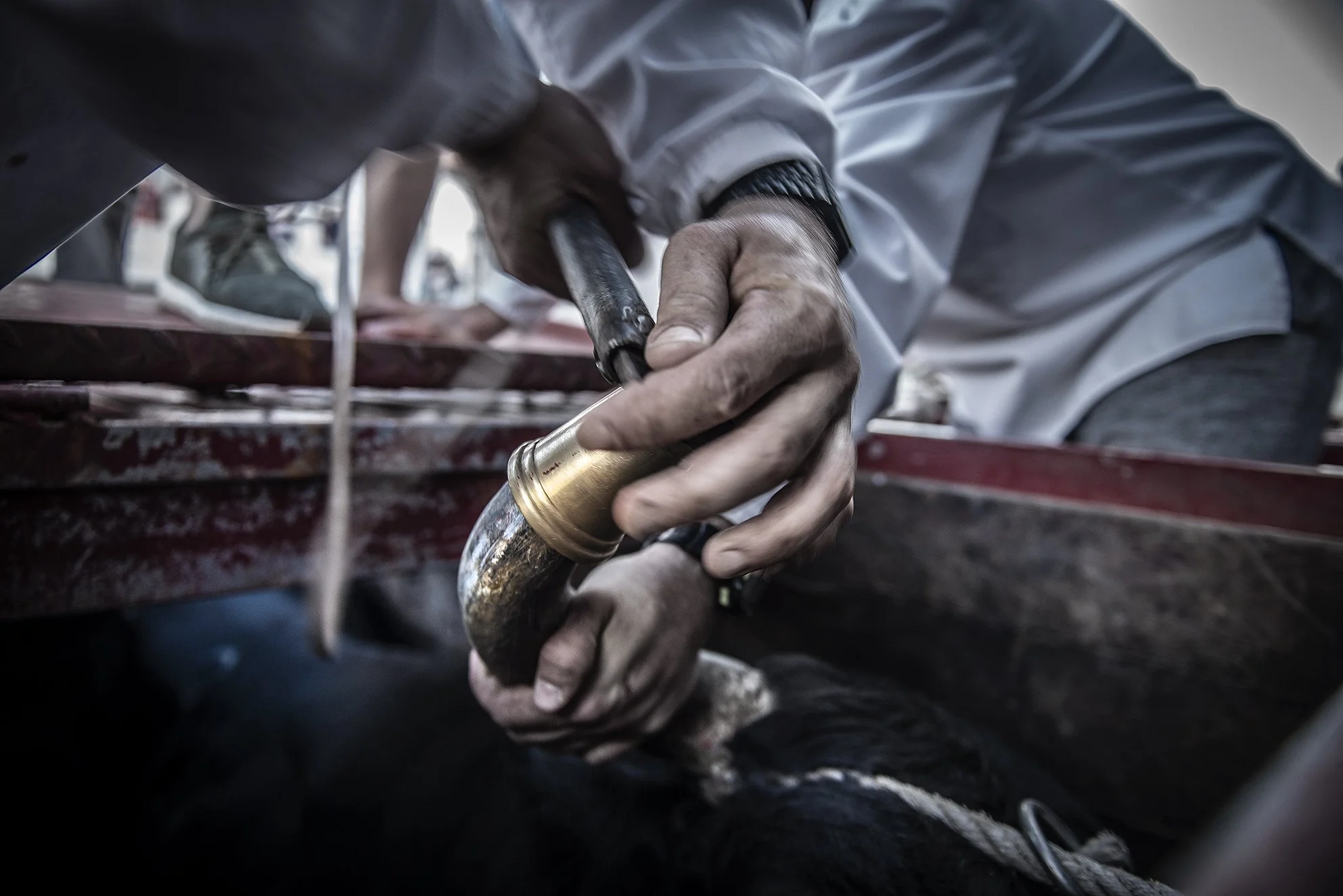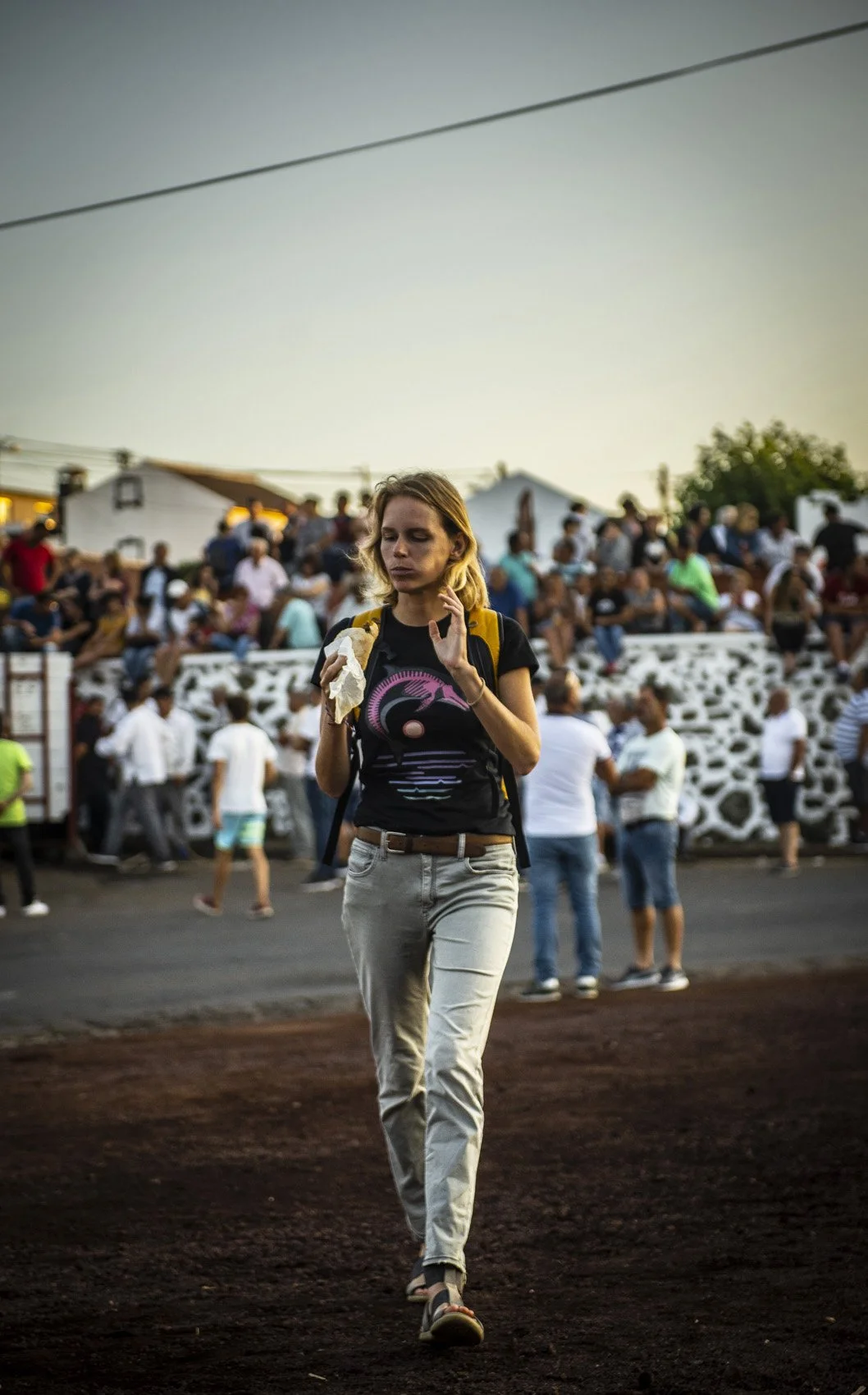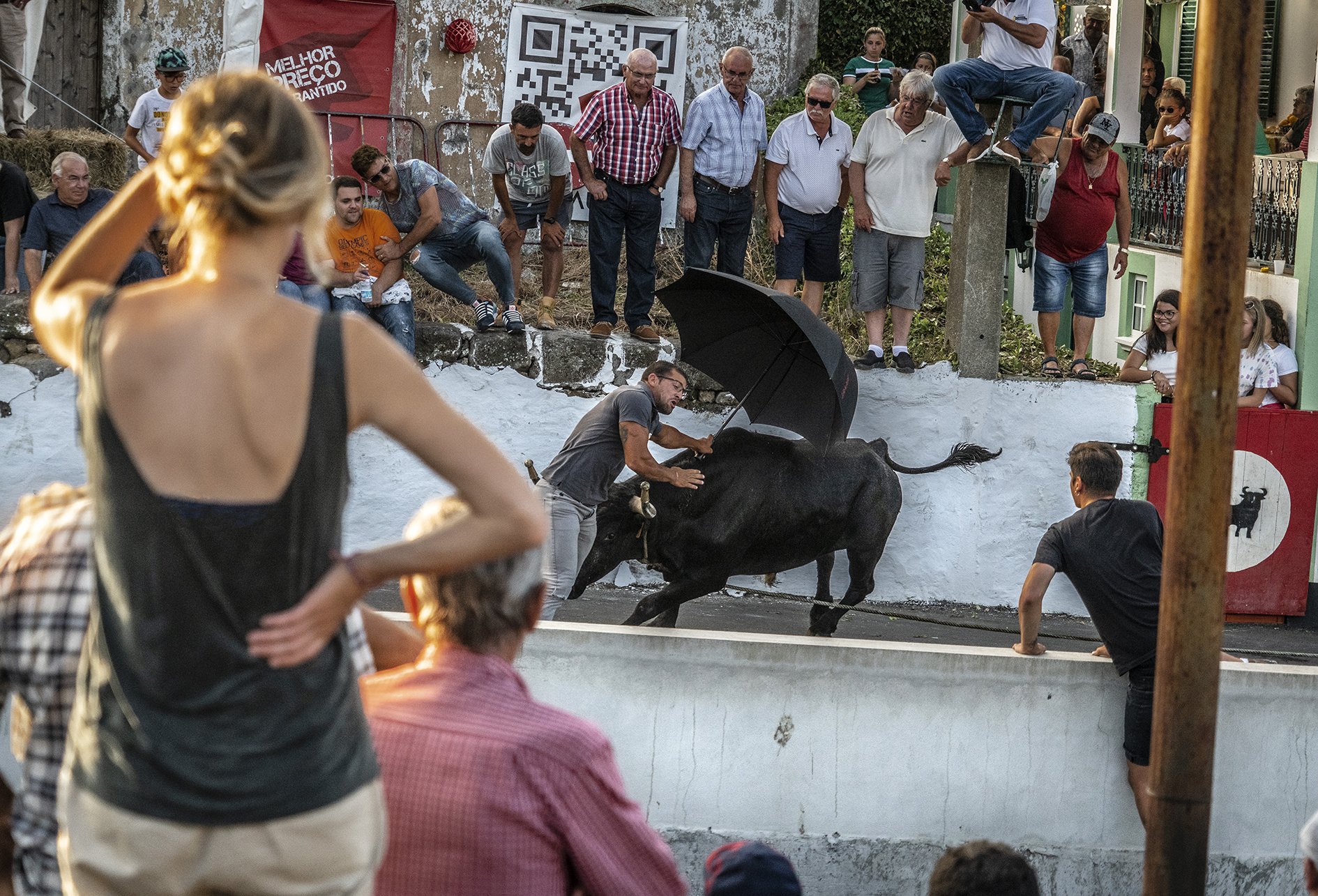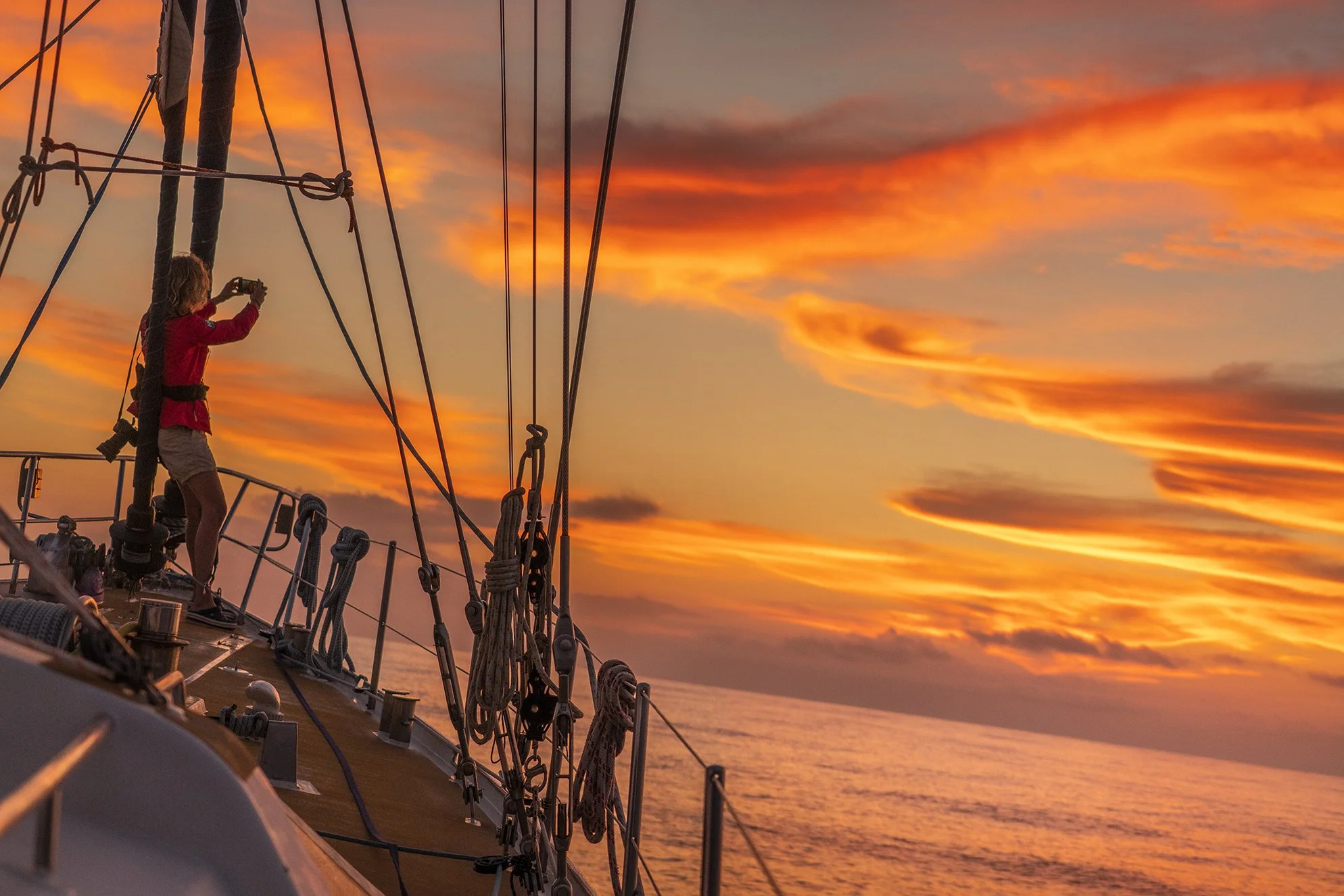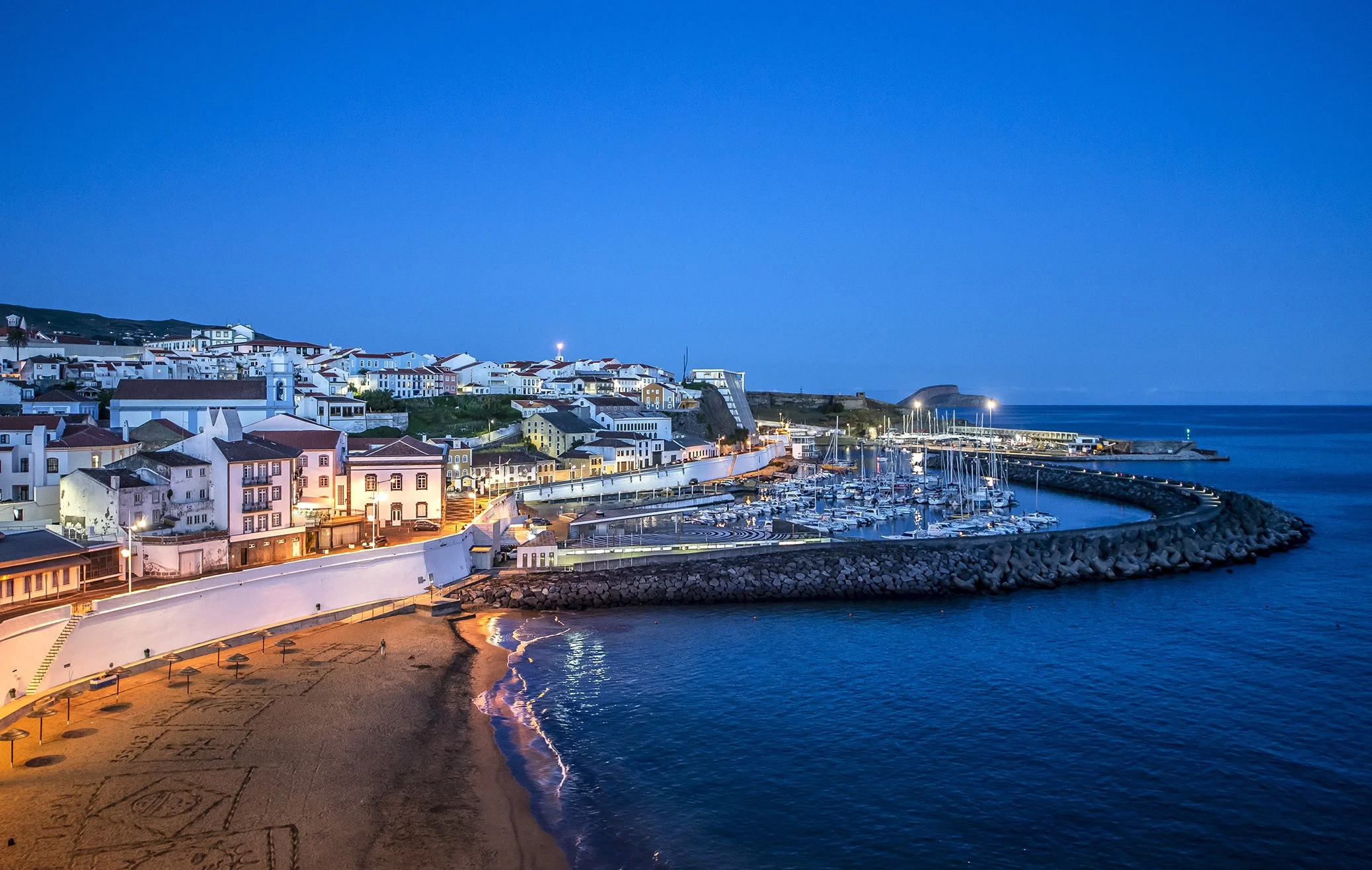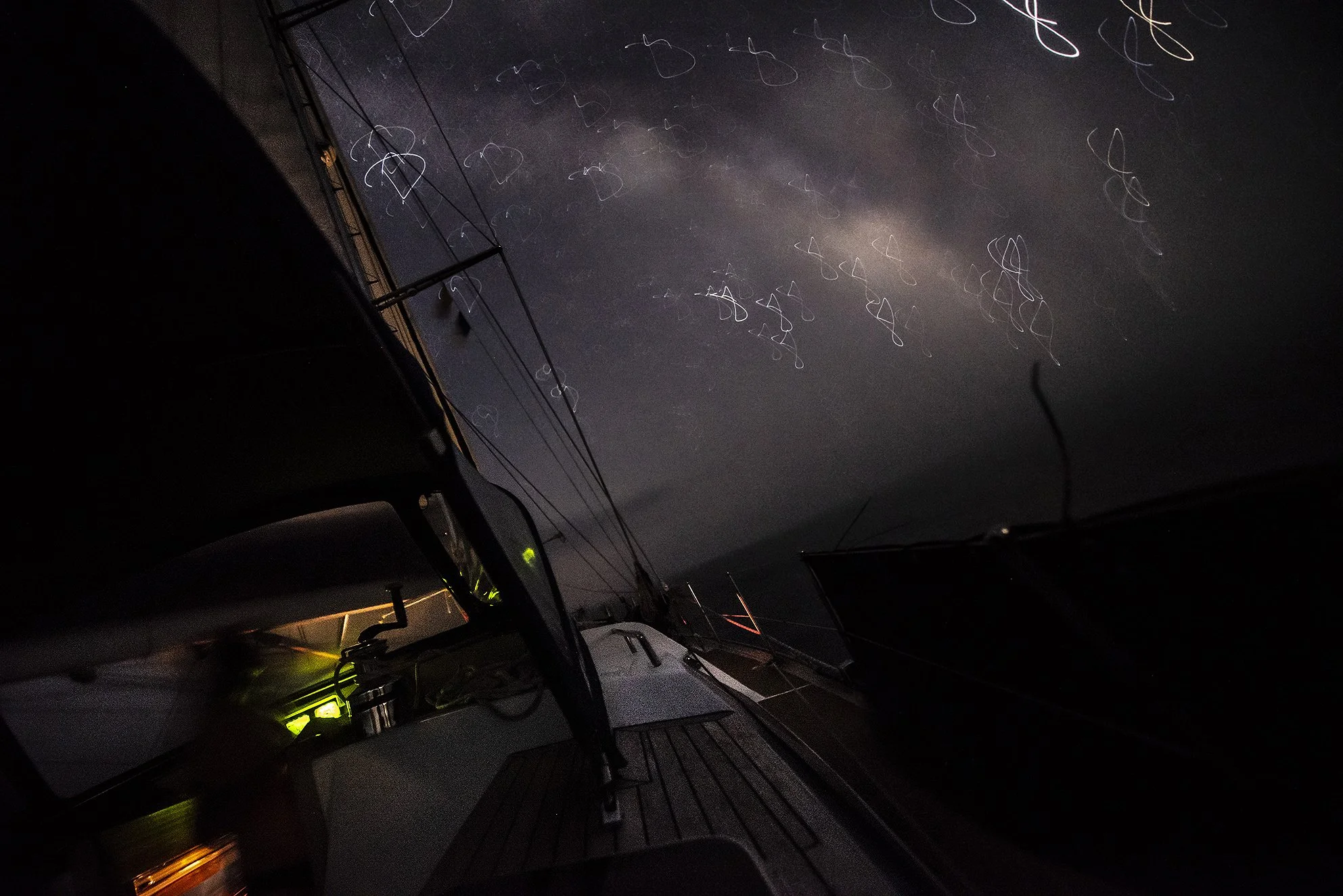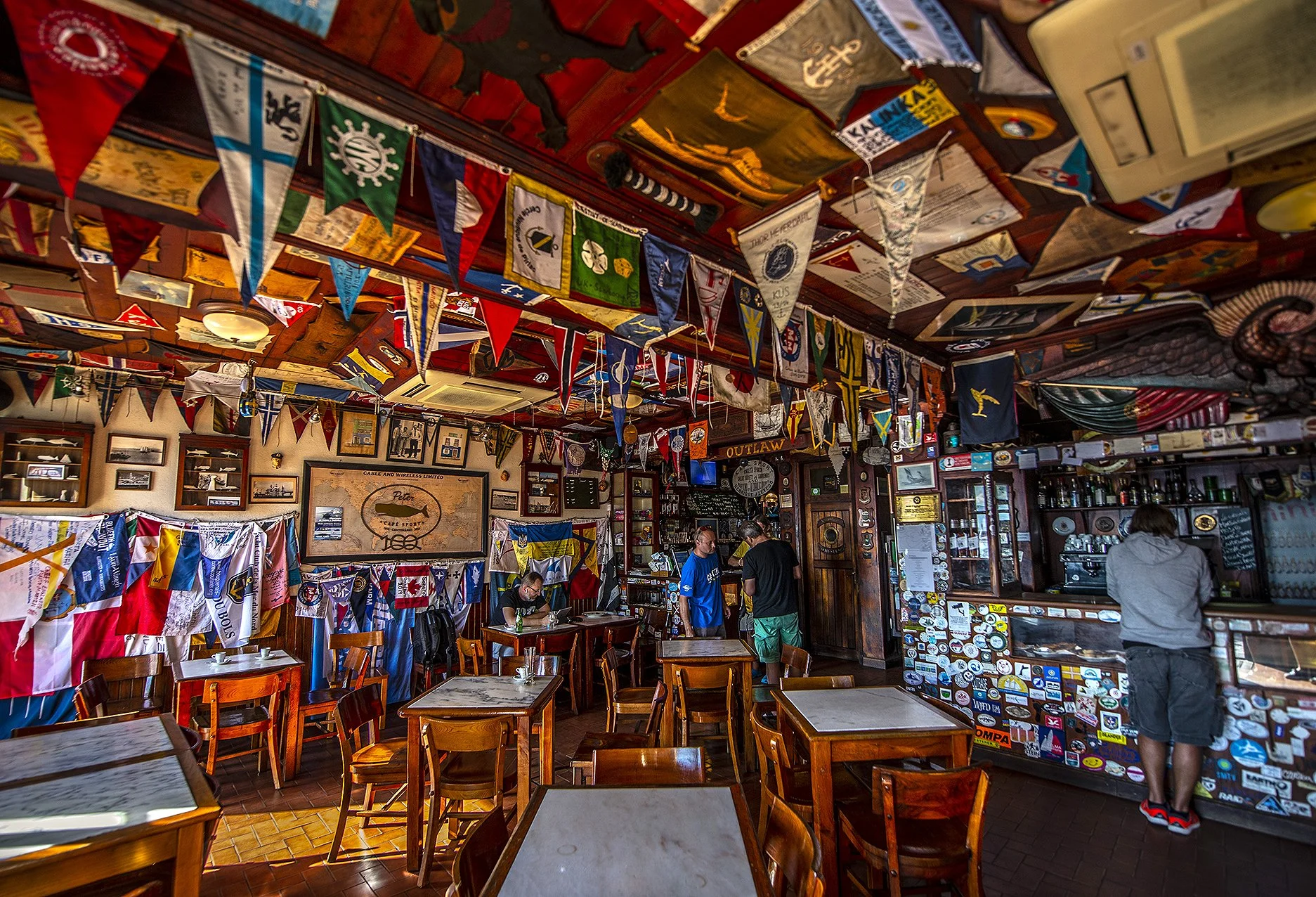Exploring the Azores - Vibrant Isles
“Run, young lady! You shouldn’t be there!”- a voice screamed behind me.
I didn’t understand; I had no idea why the crowd had gathered in one spot in between jagged streets at the hour of twilight. Then suddenly two legions ran in opposite directions, as if they were escaping from a fiery explosion. I instinctively followed…
The Old Man scolding at me.
It was then that I spotted a giant black bull on a loose rope…
OMG….
“You blonde! Quickly get out from the street! Grab my hand to climb up on the wall!” - another voice alarmed into my ear.
I climbed out of harm’s way onto a giant wall, intimidated by the concerned looks of the men running with the bull than the bull itself, so distressed were they at seeing a blonde woman tossed into the middle of the action. Like I was the object of the interest, not the event. Me, blonde fragile woman was in middle of the stage.
So I did! Quickly jumped on someone’s possession!
This was ‘Tourada a Corda’, a tradition exclusive to the Azores, and particularly practiced on Terceira. Bulls are set running down the street, held gently on a rope by two groups of five strong men each for security reasons.
After I got more comfortable, I had opportunity to come close how they prepare the run and interview locals.
All their horns are secured to not give grave injury
It’s an ancient tradition that unites the inhabitants of the island which dates back to the Spanish invasion, when the people of Angra do Heroismo scared the Spanish invaders away by setting angry bulls upon them!
It’s not a tradition that is widely shared with tourists, as the place and time for each bull run is passed by word of mouth between locals. Most chose to stay safely behind improvised walls watching the spectacle with beer and bifana (Portuguese pork sandwiches).
Me and my bifana. Careless feeling.
There is one universal rule: the bull absolutely cannot be physically harmed by spectators nor should the men who run it. Unlike Spanish bullfights, the bull is not killed after the event, but rather the opposite: they are carefully kept in the best possible physical shape and well-rested for future runs. I had the opportunity to visit the pasture where bulls were resting off-season and saw how the young calves were trained. I couldn’t believe how calm they were. The training was based on motivation, pretty much like service dogs.
The Tourada a Corda is natural adrenaline-driven sport to test behavioural skills for animals. Whether you consider it humane or not, it is one of the most ancient traditions of this historic island group and it was a real introduction to the true Azores…. by socialising with true locals!
It can get dangerous! One of the bulls rampaged security wall and went inside, injuring one of my crew members (nothing serious, just massive bruise!)
First Sight of Azores - The Real Atlantis!
Even as my co-skipper Paul and I made safe landfall at Ponta Delgada on Sao Miguel Island last summer, after logging some bloody 1,100 miles – mostly against westerly winds – from southern Portugal, we knew that we wouldn’t be staying there long. We wanted to explore further into the nine islands that make up the archipelago. Around 90% of visitors to the Azores stop at the main island of Sao Miguel, while Horta is more convenient for sailors seeking rest en route from the Carribbean or US. Much of the island group is largely unspoilt.
Paul had crossed Atlantic Ocean many times before I met him, both the north and south, including co-skippering expedition yachts in the Antarctica and taking part in three ARC rallies.
Meanwhile I spent years working with sled dogs in the Arctic wilderness and never imagined I’d become a sailor until I found myself sailing with Paul on his 15m expedition sloop Malaika from Hel in the Baltic Sea, sailing to Cowes on the Isle of Wight.
We were supposed to sail in three, me as a “puppy” just to watch and learn while “sea wolves” manage everything… but one of the “sea wolves” never came. So, we ended in situation two of us: Paul the Sea Wolf and me, the Sea Puppy with literally zero experience.
“Sooo…. What do we do?” - I asked by that time.
“Throw away garbages, we’re leaving at 4 am” - Paul said, handling me garbages while organising boat for leave.
“Wha…” - I felt confused.
“No questions, come on, hurry! You’ll learn everything on the way!” - he finished.
It was late autumn, stormy at times, and sometimes terrifying, but I fell in love with offshore sailing. After rollercoaster, I quickly completed my training courses and returned to Malaika before the following summer. Paul entrusted me to become official co-skipper and that boat became my home.
(Full story “how all of it had started” will be in another blog post)
From zero, quickly passing exams and my skills have opened the golden gates to sail to the paradise… Azores.
It couldn’t have been a better playing field for me to develop my ocean and coastal sailing skills, with a lot of challenging weather and currents to content with!
We have since spent three summers cruising the Azores, and sailed the tricky Atlantic waters between the islands and Europe six times. Arriving at the islands by sea is like voyaging into Middle Earth. After a long Atlantic passage, that can be rather super monotonous, but if you make landfall on islands that are pulsing with vibrant life!
Theirs is a completely different form of beauty: the Azores take our senses back to a nostalgic era of childhood. That specific smell of moist green forests which conjures up memories of playing among trees which feel enormously huge. The woods seem full of mysteries, myths and folklore passed from mouth to mouth; it’s often believed the islands are the peaks of the mountains of submerged Atlantis.
Furthermore, during cruise I discovered an ancient book “The Islands of Magic” by Elsie Spicer, where there was real belief that the Azores were these mysterious submerged Atlantis Kingdom! Someday I would illustrate a graphic novel of each story…
Accompanied with legendary book, cruising between the islands is a rewarding experience. Distances are small, the scenery is varied and each island has its own distinct personality. The pilot book ‘Atlantic Islands’ by Anne Hammick was our best friend, along with routing and meteo application Squid.
Sailing in between the islands’ high cliffs and mountains brings very unstable and unpredictable winds, together with fogs, showers and local currents. There are few reliable spots to drop anchor, and the islands’ unpredictable weather means you cannot leave a boat at anchor unattended for longer stays. Marinas are, however, very friendly and well organised!
Here is our route:
The Fire Island
After leaving the capital Ponta Delgada on Sao Miguel we sail the 100 miles north-west to the island of Terceira, home of the bull run. Leaving Malaika in Marina Angra de Heroismo we headed inland to Algar do Carvao, one of only two volcanoes on earth that can be walked inside by foot. This one is thick with lush vegetation and filled with the background sounds of dripping water as rain seeps down the ancient volcano sides.
Photo by crew mate Snorri Tryggvason
Oh boy, these never ending verdant hues all across the Azores are an intense, oversaturated green. However, the ocean is a deep slate blue by daylight, the shoreline marked by dark volcanic sands. Those who seek a paradise of pristine beaches under sunny skies, will be rather disappointed. There can be endless days of foggy drizzle – not even rain, but a dreadful damp that gets in everywhere. The weather is changeable, but, where there’s rain and sun simultaneously, there are many rainbows.
But don’t get discouraged! These islands offer an amazing lagoons and waterfalls to sunbathe and swim.
Terceira has two marinas, though it’s wiser to pick up Angra do Heroismo located on south over beautiful Praia da Vittoria in the mid of eastern coast. The island is ungodly swelly, swelly and swelly. Strong and long Easterlies were common last summers leaving Praia exposed to swell and wind.
But beautiful Angra recognised as UNESCO town, granted us worst swell experiences, knocking out cleats from the dock. Approaching is really tight and very stressful!
Swell is a significant factor of cruising the Azores. Because of their position in the middle of the Atlantic Ocean, where an ocean floor raises almost vertically from thousands of meters depth into high cliffs, waves are scattered from all directions after any kind of wind, leaving confused sea lasting for several days, even on fair weather after summer low pass north of the islands.
The Dragon Island
From Terceira we sailed to Sao Jorge, about 74 miles. I got up to take the watch at 0200, as we crossed the narrow 10-mile wide channel between the island of Pico and Sao Jorge. I was greeted on deck by an incredible view of the Milky Way, looking like a shining bridge connecting these two islands. As soon as the stars began fading with the dawn, I heard the eerie squawking of thousands of Cory Shearwaters soaring over the sea’s surface under the shadow of Pico mountain!
Suddenly a pack of dolphins appeared, rivaling the birds to hunt the area. Then two fishing boats floated into view like ghosts out of nowhere, while the brightening dawn began transforming the colours of Sao Jorge from sinister blues to vibrant pinks and greens as the fields high atop the cliffs slowly revealed themselves.
Shortly after Paul took over the watch we heard the characteristic ‘big splash’ and I jumped out on deck with my Nikon camera: a sperm whale appeared! Despite whale symbolism all over these islands, it isn’t common to spot whales in the Azores, especially by yacht. We’ve seen them only once during our three years of cruising here.
After the magical theatre of dawn, we approached Velas, on the southern coast of Sao Jorge, by daylight. Malaika was warmly welcomed by Jose, the harbour master in Velas’ small marina with beautiful anchorage. Despite its small size, Velas is quite easy to navigate, never getting busy and, in our experience, probably has best protection against swell. It’s inside the ‘faja’, a term for ravines that's unique to Sao Jorge. The water here is crystal blue, tons of parrot fishes underneath and there are more seabirds on the jetties than people, including plenty of fearless geese that march up and down the pontoons.
However, we decided to drop anchor in the lagoon to stay, which I resemble every morning giving a reason to wake up with excitement for swimming and then, hike for local herbs and fruits to make a breakfast!
Harbour master Jose gave us helpful tips on travelling around the dragon shaped island, which is just 33 miles long. You do not come here for churches or architecture; this island has little to offer except time travel to the Jurassic era, with its oversized ferns and hobbit-like villages, such as Faja dos Cubres. Fearless animals are more common encounters than people, so driving requires caution: the animals don’t run, but rather will look at you with confusion.
The Sao Jorge island resembles a dragon in its shape and carries lots of legends about dragons… I haven’t encrypted them yet. Look at the center square, who doesn't love those majestic creatures?
After hiking through the bird sanctuary of Sete Fontes, we realized we were really, really hungry. However, nothing was open so late in the afternoon (siesta time!). We kept driving around, finding nothing, my frustration was most visible. We drove in hunger and irritation until Paul spotted an old bar by the roadside, built into the edge of a rustic family house near the cliff. As we went in I was imagining terrible fast-food food, and the owner, Jorge, apologised, saying: “We have only hamburgers, sir. Oh and don’t mind the loud farmers hanging out there.”
And, so, I protested with angry childish face and crossed my arms…
I didn’t want to stay but Paul insisted; my stomach did too. I would never have imagined this place would become one of our favourites in the entire Azores. Heck, it’s even worth crossing the ocean just to stop at Jorge’s bar, with its view of two islands. First he brought a snack of ‘fava’ (marinated beans), locally made cheeses, sausages, sauces and bread. And finally burgers from his own pastures, the best I’ve ever tasted. Since that, we took our crews to that bar to feel the authentic atmosphere of the Azores. Jorge knows when we’re coming, he never misses seeing our yellow hull from his window as we cross the channel between Sao Jorge and Pico, and always texts us: “I see you guys. Feel welcome to stop, I’ll prepare something special for the crew.”
Best hamburgers ever are there!
THE WHALE ISLAND
We continued on from Velas to Horta on Faial, a short and enjoyable 20-mile passage with Faial’s many iconic whaleboats, which are now used for races, dotting the water ahead. Approaching Faial you have to be very cautious of eddies, waves come from all directions and the winds are constantly shifting in the shadow of Pico Mountain.
It is possible to stop on south Pico Island, but the coastline can make for unpleasant sailing with messy seas. The entrance to the marina in Lajes do Pico also requires rigorous care, as it is a narrow channel surrounded by rocky pinnacles and often exposed to strong current and swell. The marina has only four berths that can accommodate 45ft yachts (you need to contact them ahead to check if they have space). Though as cruisers we love to sail everywhere, it’s no sin to take the 30-minute ferry from Faial to Pico to visit the mountainous island instead.
As we approached Horta the whaleboat crews greeted us with smiles as we approached at the entrance. They train every weekday afternoon to race each Saturday. Horta is always an interesting melting pot of transatlantic sailors. We were allocated a berth next to Pen Duick VI, which Marie Tabarly and her crew are taking on a tour around the world and filming their ‘Elemen’terre’ project.
Every morning for several days, Marie would spend time painting her mural on the seawall. I wanted to leave our mark too, but as a professional artist I felt so under pressure to make my picture so perfect that I eventually abandoned it!
The Mural taken from top of the mast.
Together with Tabarly’s crew we greeted Mayeul Rifflet into harbor, as he finished a single-handed Atlantic delivery passage from the Caribbean, bringing his small trimaran in right before a bad storm. Then we met Sven Yrvind, the 81-year-old sailor who made a landfall after 78 days of singlehanded sailing his minuscule self-built boat. On other years we’ve bumped into the Delos crew: it’s a port with full original personalities.
Let’s not forget to stop in emblematic cafe “Peter Cafe Sport” and leave something for them!
FLOWER AND CROW ISLANDS
Photo from the Stock.
Hmmm… that’s how I always imagined the Flores Island. This picture stuck in my head in eternity.
The westernmost islands group, Flores and Corvo, are the most challenging when it comes with sailing. These islands are most exposed to passing storms, frequently enduring the worst winds and swell. The tiny harbor of Lajes das Flores is unprotected to easterly or south-easterly winds; they take no reservations, you can barely make contact with the port and the anchorage is known to be very rolly.
Theoretically, sailing to Lajes das Flores from Horta will usually involve banging against prevailing westerlies. However, in our experience the weather of the Azores is highly unpredictable and we’ve also experienced long periods of strong easterlies, mixed with every other wind direction.
On our last attempt to reach Flores in 2019 there were near-constant easterlies, and after several dozen attempts at getting in touch with Lajes harbour we eventually found out that the harbour was completely shut down due to terrible 3m easterly swells. Locals say the best time to try for Flores is in June, which typically has the best weather windows of the year.
That autumn, we made a quick change of plans and dropped our crew off in Ponta Delgada after two days tacking against easterlies. By then it was late September, the final call for a safe passage back to the European mainland. We were nervous, and keeping a very keen eye on the forecasts; there was gale after storm, storm after gale. One night during an electrical storm lightning struck the boat two pontoons along from us, thankfully only partially damaging our wind instruments. It was starting to feel like the Azores didn’t want us to leave!
Eventually we found a safe window for at least six days and set off. As with every time we leave the Azores, l watched the islands fading into the clouds like a mirage. I always feel emotional watching it, which is a sign that place is always worth another visit. In the end, we had an ideal beam reach in 20-25 knots, with a fair sea state for nearly the entire passage. Still it was nerve-wracking, and we reefed more than we usually needed to reduce speed. After eight days we made safe landfall in Portimao, to suddenly receive a huge amount of missed calls and text messages, all screaming: “Are you guys safe?!” During our passage Hurricane Lorenzo had passed through Azores. It was later designated a Category 5 hurricane, with 15m waves ravaging the shores. The port of Flores was completely devastated. Azoreans are used to storms but this one was too much for them.
We weren’t destined for Flores that year but, as a wise person, Jose in Velas once said, it is sometimes best to not visit all the places around the world, but to leave unexplored places in our imagination. It gives us a reason to dream. And we will be back. After three full summer seasons sailing in Azores, the islands are still calling us back in our hearts, although for now we are sailing on to higher latitudes.
One day we’ll finally visit the final isle…
Wait,
Did I say we?
While I’m writing this post today, it’s not plural anymore.
We didn’t make and will never make it together.
Now it’s only up to me.
My partner Paul Motawa has passed away in the Azores in 2023, and I’m writing the Azores Story as the first blog post as a tribute to him. These islands were his favourite and I’m eternally grateful for our three years in the Azores, becoming ambassadors during the COVID times to promote tourism in a bright light.
Thank you Paul for everything.
The original story had been published in Yachting World Issue June 2021, edited by Helen Fretter. This blog post is an extended version.
Details, trail marks, roads less travelled and hidden cafes will be revealed in full version in my Book!





